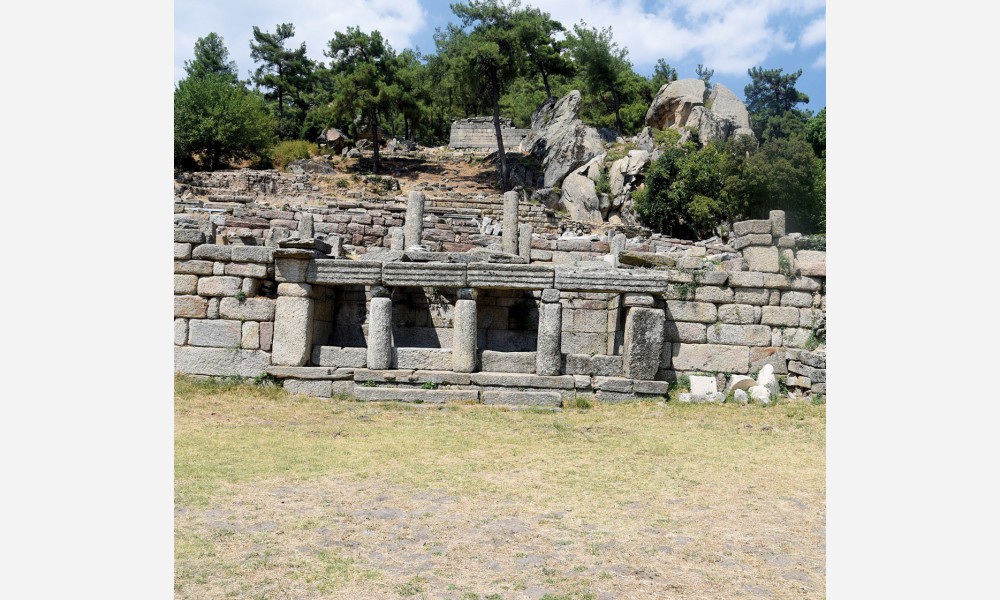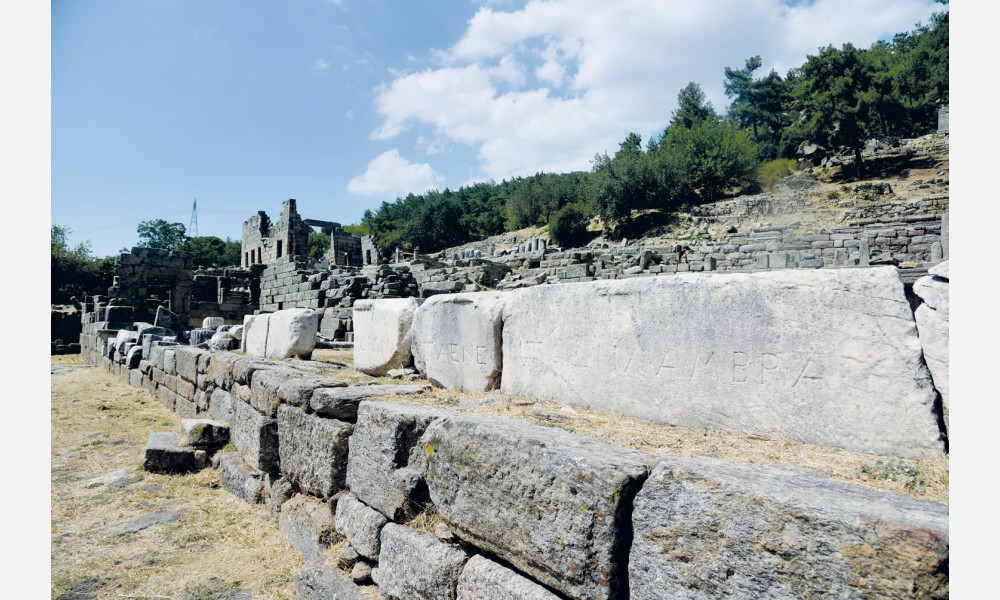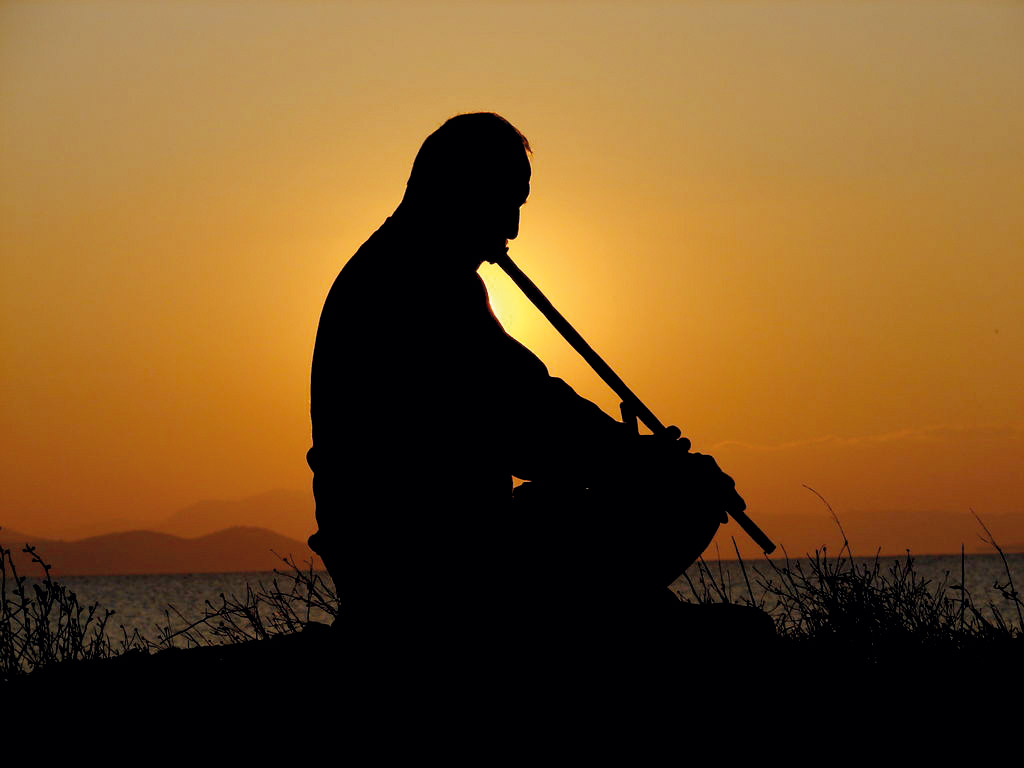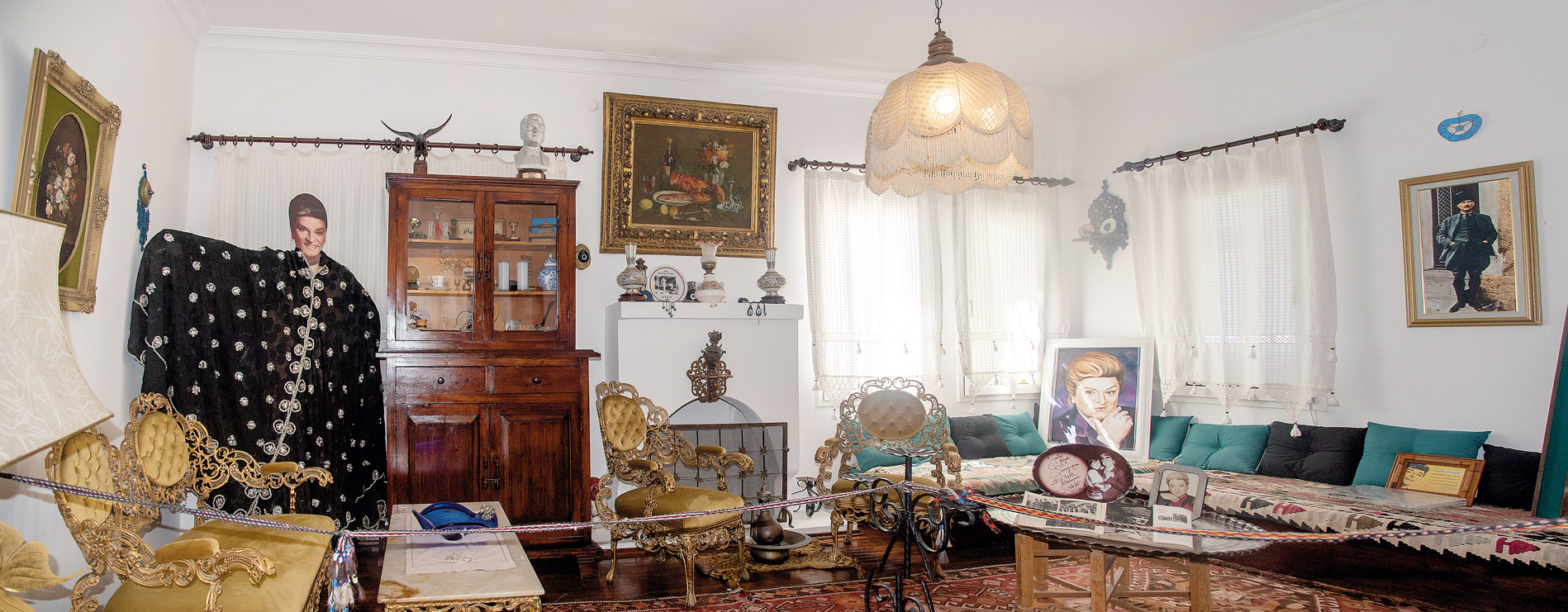LABRAUNDA “THE SACRED TABLELAND OF ZEUS”

LABRAUNDA
“THE SACRED TABLELAND OF ZEUS”
In labraunda it all started with a rift rock.
According to legend, the Sky God threw his labrys and cut this rock in two. As a result, the source of fresh water that burst from under the Rock gave life to Mylasa. You can drink this water, which is still flowing today!
Labraunda derived its name from the labrys, which is the double-bitted axe symbolizing holiness, was dedicated to the god Zeus depicted holding the double-edged axe instead of the usual lightning sceptre in his hand.
Established around a sacred rock called Split Rock and 14 kilometres away from Milas, Labraunda is the most magnificent and best-preserved sanctuary in ancient Caria.
There are eyes in the labrys located on the keystone of the arched door which is called the "Axe Gate" now. The Axe Gate is the starting point of the sacred way to the Labraunda Sanctuary. The eyed-labrys embossed on the keystone is interpreted as "Zeus sees everything".
Labraunda’s most important time was the 4th century BC. The region of Caria experienced its Golden Age with the Hecatomnid Dynasty. The most remarkable period of Labraunda was experienced under the rule of the eldest son Mausolus (377-352 BC), who took over the accession after Hekatomnus, and Idrieus (351-344 BC), who became the ruler after Mausolus. The stelas refer to the owners of the sanctuary; Mausolus, and Idrieus.
The sanctuary in Labraunda is built on a very steep slope. Therefore, terraces were needed in order to build structures. Labraunda has 5 terraces today.
Mausolus had a stone-paved sacred road built up from Mylasa for transporting the large marble blocks in particular. Later he had a stoa and an andron built for the feasts. This structure was used as the feast room during the festivals. There is an almost fully preserved inscription on the structure saying, "Mausolus, the son of Hekatomnus, dedicated the Andron and its contents to Zeus Labraundos." Later when Idrieus was the ruler, the Temple of Zeus was enlarged, the second Andron, the Oikoi building, the South Propylon, and the Doric Building were built. Many structures which can be seen today are the remains of that time.
The sanctuary was used to entertain guests for five days every year for major religious festivals. Numbers of people were reaching Labraunda by following the stone-paved sacred road, or the other road that was from Alinda and Alabanda in the valley behind the mountains on the north side of Labraunda.
The history of Labraunda is not limited to the Hekatomnid period. Despite the fact that the inscriptions and remains of later periods are few in number, their sizes can be proof of the existence of the temple during the Hellenistic period. By the end of the Roman period, many emperors and governors had been blessed by the priests of Labraunda.
The oldest information we can reach about Zeus Labraundos was written by Plutarch, the writer who lived in the 2nd century AD.
When Heracles killed Hippolyta, the queen of the tribe of the Amazons, he gave her double-bitted axe to Omphale as a gift. Lydian kings who came to power after Omphale considered this axe sacred and pass it on to each other. Years passed. When Gyges rebelled and was making war upon Candaules, Arselis came with a force from Mylasa to assist Gyges; Arselis then slew Candaules and his companion and took the axe to Caria with the other spoils of war. And, having set up a statue of Zeus, Arselis put the axe in his hand and invoked the god, Labrandeus that the Lydians called "labrys".
A large cracked rock in Labraunda appears to have been split in half. The Split Rock is located in the clearest and most striking part of the sanctuary. There is a projection, which was shaped in ancient times, on the west side of the Split Rock. It consists of a large niche carved into the cleft rock and a staircase cut in the stone facing the Split Rock.
The unique monumental built tomb, which is located on the steep slope above the sanctuary, is 9.70 meters long and 7.80 metres wide. Both the profiles of the architectural blocks and the vault type indicate a date in the second half of the 4th century BC. In the ante-room, there was one sarcophagus on each side, built of stone slabs. In the tomb chamber, there are three large monolithic sarcophagi.
Due to similarities between the Zeus temple at Labraunda and the Athena temple at Priene it has been suggested that both temples were built by the same architect, the famous Pytheos, who was also the architect of the Mausoleum at Halicarnassus. It seems reasonable to assume that Pytheos built the temple at Labraunda before he started building at Priene.
Another significance of Labraunda lies in its excavation history. As of the 1700s, many travelers visited the area. However, the fate of Labraunda changed in 1948 when Swedish archaeologist Professor Axel W Persson discovered Labraunda. Today, with the ongoing excavations under the direction of Associate Professor Oliver Henry, it maintains its position as one of the longest-running archaeological dig sites in Turkey.
The spring water of Labraunda water is also popular even today; it is bottled and distributed under the name of the sanctuary, and is the most preferred water brand in almost all settlements in Mugla.















